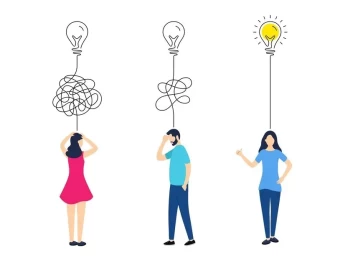- Table of Contents
- Introduction
- Unveiling the Roles of a Trainer
- The Architect of Knowledge
- Mentorship in Action
- Motivator Extraordinaire
- Facilitator of Collaborative Learning
- The Importance of Being an Effective Trainer
- Igniting the Spark of Curiosity
- Fostering Adaptability in a Dynamic World
- Enhancing Productivity through Empowerment
- Contributing to Organisational Success
- Enabling a Culture of Continuous Learning
- 12 Qualities Every Good Trainer Must Have
- 1. Expertise
- 2. Communication Skills
- 3. Adaptability
- 4. Empathy
- 5. Passion
- 6. Patience
- 7. Listening Skills
- 8. Organisational Skills
- 9. Problem-Solving Abilities
- 10. Interpersonal Skills
- 11. Innovative Thinking
- 12. Continuous Learning
- Steps to Become an Effective Trainer
- 1. Define Clear Objectives
- 2. Know Your Audience
- 3. Create Engaging Content
- 4. Utilise Varied Teaching Methods
- 5. Encourage Collaboration
- 6. Provide Constructive Feedback
- 7. Stay Updated
- 8. Seek Professional Development
- 9. Reflect and Improve
- 10. Build a Support System
- 11. Embrace Technology
- 12. Cultivate a Positive Learning Environment
- The Dilemma of Using Humor As a Trainer
- Conclusion
Introduction
As we navigate the intricate landscape of professional development, the role of a trainer emerges as a pivotal force, shaping the skills and knowledge of individuals across various domains. Being an effective trainer is more than just delivering information; it's about inspiring, motivating, and fostering an environment conducive to growth. In this comprehensive guide, we will delve into the multifaceted world of training, exploring the roles of a trainer, the profound importance of effectiveness, essential qualities, steps to become an adept trainer, and the delicate use of humour in the training arena.
Unveiling the Roles of a Trainer
As individuals step into the role of a trainer, they embark on a multifaceted journey, donning various hats to meet the diverse needs of their audience. Understanding the intricacies of these roles is not just a prerequisite but a cornerstone of effective training.
The Architect of Knowledge
Akin to a skilled architect meticulously planning the construction of a building, a trainer designs the learning experience. This involves structuring the content in a logical and cohesive manner, ensuring that each piece of information serves as a building block for the next. The architectural finesse of a trainer lies in creating a blueprint that facilitates optimal comprehension and retention.
Consider a training session as a blueprint for intellectual construction. The trainer must assess the foundation of existing knowledge, erect sturdy pillars of new information, and create bridges that connect the old with the new. Through strategic planning and a keen understanding of the subject matter, a trainer acts as the architect, shaping the foundations upon which participants can construct their understanding.
Mentorship in Action
In the role of a mentor, a trainer extends beyond the realms of imparting knowledge to guiding individuals on their learning journey. This mentorship involves more than a one-way street of information transfer; it's a dynamic exchange where trainers become navigators, helping participants chart their course through the sea of new concepts.
A mentor-trainer relationship is not only about expertise but also about empathy. By understanding the aspirations, challenges, and individual learning styles of participants, a trainer can tailor their guidance, ensuring that each individual's journey is both meaningful and enriching. Through mentorship, trainers become the lighthouse, guiding learners safely through the sometimes turbulent waters of new knowledge.
Motivator Extraordinaire
Motivation is the fuel that propels the learning engine forward. An effective trainer assumes the role of a motivator, inspiring participants to push their boundaries, embrace challenges, and persist in the face of difficulties. This motivational force extends beyond the confines of the training session, seeping into the daily practices and attitudes of those under the trainer's influence.
Picture a trainer as a catalyst, initiating a chain reaction of enthusiasm and dedication among participants. By instilling a sense of purpose, relevance, and achievement, a trainer becomes the driving force behind sustained learning. This motivation is not merely an external cheerleading act but a nuanced understanding of how to ignite the internal spark within each participant, propelling them toward excellence.
Facilitator of Collaborative Learning
The training environment is not a passive stage where a monologue unfolds; it is a dynamic arena for collaborative learning. In the role of a facilitator, a trainer creates an atmosphere where participants feel empowered to contribute, share insights, and learn collectively. This collaborative spirit enhances the richness of the learning experience, as participants draw not only from the trainer's expertise but also from the collective wisdom of their peers.
Imagine a trainer as the conductor of an orchestra, orchestrating harmonious interactions and ensuring that each instrument contributes to the symphony of knowledge. This facilitative role involves not only disseminating information but also fostering an environment where participants actively engage with the content and with each other, creating a vibrant community of learners.
In essence, the roles of a trainer are not isolated tasks but interconnected facets of a dynamic and holistic approach to education. To be an effective trainer is to seamlessly transition between these roles, adapting to the ever-changing landscape of the learning journey. It's an art that combines expertise with empathy, guidance with collaboration, and motivation with a passion for the transformative power of education. As trainers unveil and embrace these roles, they set the stage for an impactful and enduring educational experience.
The Importance of Being an Effective Trainer
The significance of being an effective trainer transcends the confines of a traditional classroom setting. In a world where knowledge is a dynamic currency, the role of a trainer takes centre stage as a linchpin in the process of personal and professional development. Understanding the profound impact of effectiveness is crucial for both trainers and the entities they serve.
Igniting the Spark of Curiosity
At the core of effective training lies the ability to ignite the spark of curiosity within participants. An effective trainer goes beyond the dissemination of facts and figures; they create an environment that stimulates an intrinsic desire to explore, question, and discover. This spark of curiosity becomes the catalyst for a lifelong journey of learning, prompting individuals to seek knowledge not out of obligation but from a genuine thirst for understanding. The effective trainer acts as a guide through the vast landscape of knowledge, revealing not only the well-trodden paths but also the hidden trails waiting to be explored.
Fostering Adaptability in a Dynamic World
The professional landscape is undergoing constant metamorphosis, demanding adaptability and agility from individuals. An effective trainer equips participants with the tools and skills needed to navigate this ever-evolving terrain. Beyond the transfer of knowledge, the emphasis lies in cultivating a mindset of adaptability, where individuals can confidently embrace change and leverage new opportunities. Think of an effective trainer as a mentor preparing participants not only for the challenges of today but also for the uncertainties of tomorrow.
Enhancing Productivity through Empowerment
The impact of effective training reverberates through the corridors of productivity. Well-trained individuals are not just repositories of information; they are empowered contributors to organisational success. By providing the right knowledge, skills, and tools, an effective trainer becomes an architect of productivity, shaping individuals who can efficiently translate their learning into tangible results. Imagine the workplace as a collaborative masterpiece, with each employee contributing their expertise and skills harmoniously. The effective trainer, in this context, plays a pivotal role in sculpting a workforce that not only meets the demands of their roles but also elevates the collective output of the organisation.
Contributing to Organisational Success
Organisations are built on the collective capabilities of their workforce. An effective trainer, by extension, becomes an invaluable asset in the pursuit of organisational success. Beyond individual development, trainers contribute to the cultivation of a learning culture within the organisation. This culture becomes a driving force, fostering innovation, collaboration, and a continuous pursuit of excellence. Consider the effective trainer as a key architect in the construction of an organisational ethos that values learning as a strategic imperative. Through targeted training initiatives, organisations can align their workforce with strategic goals, ensuring that every individual becomes a stakeholder in the shared journey toward success.
Enabling a Culture of Continuous Learning
In a world where change is the only constant, the importance of continuous learning cannot be overstated. An effective trainer not only imparts knowledge but instil a passion for ongoing self-improvement. By nurturing a culture of continuous learning, trainers become champions of growth, laying the foundation for individuals and organisations to stay relevant in a dynamic landscape. Visualise the culture of continuous learning as a thriving ecosystem, sustained by the effective trainer's commitment to knowledge dissemination and skill development. This culture permeates every aspect of an organisation, creating an environment where individuals are not just employees but active participants in their own evolution.
In essence, the importance of being an effective trainer lies in the transformative impact it has on individuals, teams, and organisations. It goes beyond the transfer of information; it is about shaping mindsets, fostering curiosity, and empowering individuals to navigate the complexities of a dynamic world. As trainers embrace this role with dedication and passion, they become instrumental in sculpting a future where learning is not just an event but a way of life.
12 Qualities Every Good Trainer Must Have
Becoming an effective trainer requires more than just knowledge of the subject matter. It demands a unique blend of qualities that set exceptional trainers apart. Here are twelve essential qualities every good trainer must possess:
1. Expertise
At the heart of every good trainer lies a profound understanding of the subject matter. Expertise is not just about knowing the content; it's about possessing a deep comprehension that allows trainers to navigate complex concepts with ease. Participants look to trainers as authoritative figures, and a solid foundation of expertise establishes credibility and trust, laying the groundwork for a successful training relationship. A good trainer continually updates their knowledge, ensuring relevance and staying at the forefront of industry advancements.
2. Communication Skills
The ability to convey information effectively is a hallmark of a good trainer. Clear, concise, and articulate communication ensures that participants grasp the nuances of the subject matter. Trainers with strong communication skills can captivate their audience, making the learning experience both engaging and accessible. Effective communication extends beyond verbal expression; non-verbal cues, active listening, and adapting communication styles are integral components that contribute to a well-rounded skill set.
3. Adaptability
In the dynamic landscape of training, adaptability is a vital quality. Trainers encounter diverse learning styles, unexpected challenges, and varying participant needs. An adaptable trainer can pivot seamlessly, tailoring their approach to meet the unique requirements of each training session. Adaptability extends to technological advancements and evolving teaching methodologies, ensuring trainers remain versatile in addressing the ever-changing dynamics of the learning environment.
4. Empathy
Empathy is the key to unlocking a deeper connection between the trainer and the participants. Understanding the challenges, fears, and aspirations of learners creates a supportive and inclusive learning environment. A trainer with empathy can tailor their approach, ensuring that each participant feels seen, heard, and valued. Empathy goes beyond understanding; it drives trainers to anticipate participant needs, fostering a culture of care and support.
5. Passion
Passion is the driving force that transforms a good trainer into an inspiring mentor. Enthusiasm for the subject matter is contagious, sparking a similar fervour in participants. A passionate trainer not only imparts knowledge but instils a sense of excitement and curiosity that motivates learners to delve deeper into the material. Passion fuels the trainer's commitment, turning each training session into an opportunity to ignite the flame of curiosity in participants.
6. Patience
Every participant learns at their own pace, and patience is a virtue that ensures no one is left behind. A patient trainer understands that the learning journey is a process, not a race. They provide the necessary time and support for participants to grasp complex concepts and master new skills. Patience is not only about waiting; it's about creating a supportive environment that encourages participants to ask questions and seek clarification without hesitation.
7. Listening Skills
The ability to listen actively is a fundamental quality of a good trainer. Attentive listening allows trainers to understand participant concerns, questions, and feedback. By actively engaging with participants, trainers create a collaborative learning environment where everyone's voice is valued. Listening skills are a two-way street, fostering open communication and demonstrating the trainer's genuine interest in the thoughts and perspectives of each participant.
8. Organisational Skills
Efficient organisation is the backbone of a well-run training session. Trainers with strong organisational skills can seamlessly plan, structure, and execute training programs. From developing a clear curriculum to managing resources, organisational prowess ensures that training sessions run smoothly. Organisational skills encompass not only planning but also the ability to adapt to unexpected changes, maintaining a structured and effective learning environment.
9. Problem-Solving Abilities
In the dynamic world of training, challenges are inevitable. A good trainer possesses problem-solving abilities to address unexpected issues promptly and effectively. Whether it's a technical glitch, a participant concern, or a deviation from the planned agenda, problem-solving skills allow trainers to navigate hurdles with finesse. Problem-solving extends to creative thinking, enabling trainers to devise innovative solutions that enhance the overall training experience.
10. Interpersonal Skills
Building positive relationships with participants is a cornerstone of effective training. Strong interpersonal skills enable trainers to connect with individuals, fostering an atmosphere of trust and collaboration. Participants are more likely to engage actively in a training session when they feel a genuine connection with the trainer. Interpersonal skills go beyond rapport-building; they involve creating a welcoming and inclusive space that encourages participants to share their perspectives and experiences.
11. Innovative Thinking
Creativity and innovation are essential for keeping training sessions engaging and dynamic. A good trainer employs innovative thinking to incorporate fresh and creative teaching methods. By thinking outside the box, trainers capture participants' attention and enhance the overall effectiveness of the learning experience. Innovative thinking involves staying abreast of emerging trends and technologies, ensuring that training methods remain current and impactful.
12. Continuous Learning
The commitment to continuous learning distinguishes a good trainer from a great one. Staying abreast of industry trends, emerging technologies, and new teaching methodologies ensures that trainers remain at the forefront of their field. This continuous learning mindset also sets an example for participants, encouraging them to adopt a similar attitude toward lifelong learning. Continuous learning involves not only expanding knowledge but also seeking feedback and proactively addressing areas for personal and professional growth.
Steps to Become an Effective Trainer
Mastering the art of training is a continuous journey of refinement and growth. Here are actionable steps to guide aspiring trainers on their path to effectiveness:
1. Define Clear Objectives
The foundation of effective training lies in the clarity of objectives. Before embarking on any training session, a good trainer takes the time to clearly define the goals and outcomes they intend to achieve. Whether it's imparting specific skills, reinforcing knowledge, or fostering a particular mindset, well-defined objectives provide a roadmap for designing and delivering impactful training content. Clear objectives not only set expectations but also help participants understand the purpose and relevance of the training.
2. Know Your Audience
Tailoring the training approach to the needs, preferences, and skill levels of the audience is a hallmark of effective training. A good trainer invests time in understanding the demographics, backgrounds, and learning styles of participants. This knowledge allows trainers to adjust their delivery methods, ensuring that the training resonates with the unique characteristics of the audience. Knowing your audience is the key to unlocking engagement. When participants feel that the training is customised to their needs, they are more likely to be actively involved and invested in the learning process.
3. Create Engaging Content
Content is the lifeblood of any training session, and effective trainers excel in creating engaging and relevant materials. Whether it's designing presentations, developing interactive activities, or curating resources, the content should be structured to capture participants' attention and encourage active participation. Engaging content is the storyteller's craft, weaving a narrative that captivates participants, making the learning experience not only informative but also enjoyable and memorable.
4. Utilise Varied Teaching Methods
People learn in different ways, and an effective trainer recognises the importance of incorporating diverse teaching methods. By utilising a mix of visual, auditory, and kinesthetic approaches, trainers cater to various learning styles, ensuring that participants can grasp and retain information more effectively. Teaching methods are the artist's palette, each method a unique colour that, when blended thoughtfully, creates a vibrant and comprehensive learning experience.
5. Encourage Collaboration
Fostering a collaborative learning environment is essential for effective training. Encouraging participants to share insights, engage in discussions, and work together on activities not only enhances the learning experience but also promotes a sense of community and shared knowledge. Collaboration is the catalyst that transforms the training room into a dynamic hub of ideas and shared experiences. Participants, in turn, become active contributors to their own learning journey.
6. Provide Constructive Feedback
Feedback is a powerful tool for growth, and effective trainers understand the importance of providing constructive feedback. Timely and specific feedback helps participants understand their strengths and areas for improvement, guiding them toward mastery of the subject matter. Feedback is the compass that points participants in the right direction. It not only reinforces positive behaviours but also offers guidance on refining skills and knowledge.
7. Stay Updated
In the ever-evolving landscape of knowledge and technology, staying updated is crucial for a trainer's effectiveness. Regularly seek out new information, industry trends, and advancements in the subject matter to ensure that the training content remains relevant and cutting-edge. Staying updated is the commitment to remaining at the forefront of knowledge. This continuous learning mindset not only enhances the trainer's expertise but also sets an example for participants to embrace a similar attitude toward ongoing self-improvement.
8. Seek Professional Development
Attending workshops, conferences, and training programs dedicated to enhancing training skills is a proactive step toward becoming an effective trainer. Engaging with other trainers, learning from experienced professionals, and staying abreast of best practices contribute to a trainer's professional development. Professional development is the trainer's toolkit, filled with resources and insights that enrich their skill set and broaden their perspective on effective training methodologies.
9. Reflect and Improve
Effective trainers engage in regular self-reflection to assess their performance and identify areas for improvement. Taking the time to reflect on each training session, seeking feedback from participants, and analysing what worked well and what could be enhanced are essential steps in the journey toward mastery. Reflection is the mirror that allows trainers to see their strengths and weaknesses objectively. This self-awareness is a powerful tool for continuous improvement.
10. Build a Support System
Connecting with other trainers, mentors, or industry experts creates a support system that facilitates knowledge exchange, collaboration, and shared experiences. Building a network of professionals in the training field provides valuable insights, advice, and a sense of community. The support system is the safety net that empowers trainers to take risks, seek guidance, and navigate challenges with confidence.
11. Embrace Technology
Incorporating technology into training methodologies enhances accessibility, engagement, and effectiveness. Whether it's utilising e-learning platforms,interactive tools, or virtual simulations, embracing technology allows trainers to cater to the diverse learning preferences of participants. Technology is the enhancer that magnifies the impact of training. It not only expands the reach of training programs but also leverages innovative methods to make the learning experience more immersive and dynamic.
12. Cultivate a Positive Learning Environment
The physical and emotional atmosphere of the training environment significantly influences the effectiveness of the session. Creating a positive and inclusive space fosters engagement and enhances the overall learning experience. A positive learning environment is the fertile ground where seeds of knowledge and inspiration can take root and flourish, empowering participants to actively embrace the training content.
The Dilemma of Using Humor As a Trainer
Humour, when wielded with care and consideration, can be a powerful tool in a trainer's arsenal. However, the use of humour in training sessions is a delicate balance that requires thoughtful navigation. Humour has the potential to captivate an audience, alleviate tension, and enhance the overall learning experience. Yet, it is essential to approach humour with cultural sensitivity, avoiding topics that may be offensive or divisive.
Humour should be used to create a positive and inclusive atmosphere rather than alienating participants. Consider the cultural background, preferences, and sensitivities of the audience to ensure that humour enhances, rather than detracts from, the training content. A well-timed joke or a lighthearted anecdote can foster a connection between the trainer and participants, making the learning experience more enjoyable and memorable.
Conclusion
In conclusion, becoming an effective trainer is a nuanced journey that requires a combination of knowledge, skills, and a genuine passion for facilitating learning. By understanding the diverse roles of a trainer, recognising the importance of effectiveness, embodying essential qualities, following actionable steps, and navigating the dilemma of humour, trainers can truly make a lasting impact on the professional development landscape. Aspiring trainers, embark on this journey with enthusiasm, dedication, and a commitment to empowering others through the transformative power of education.
























